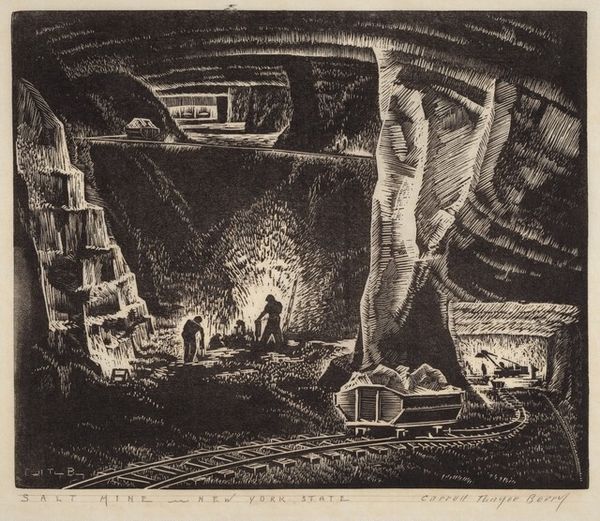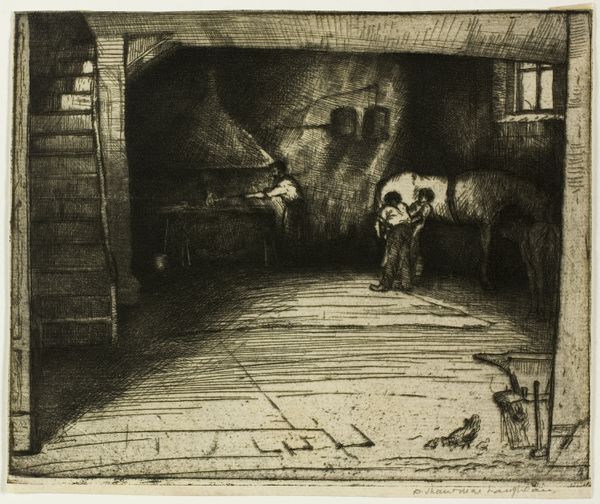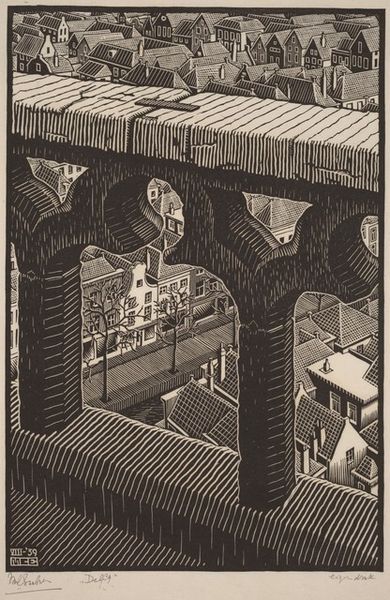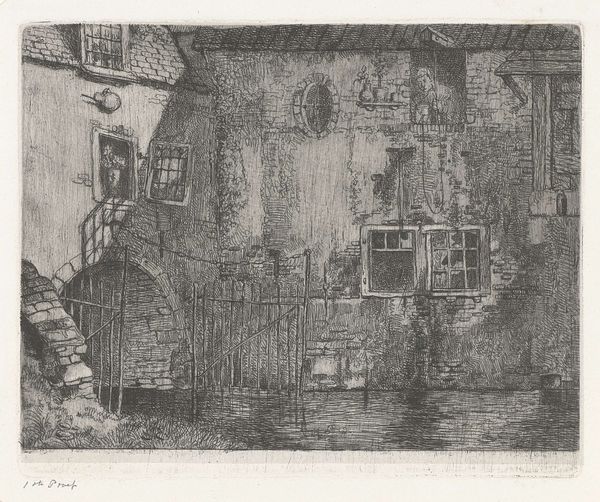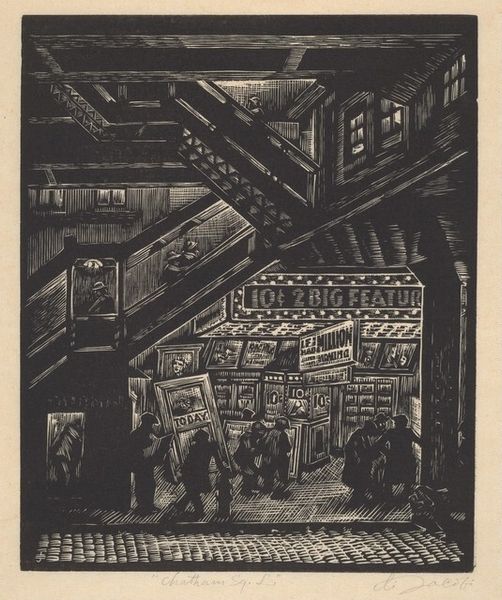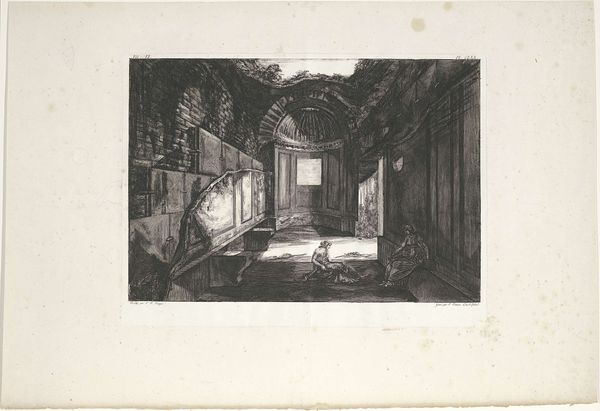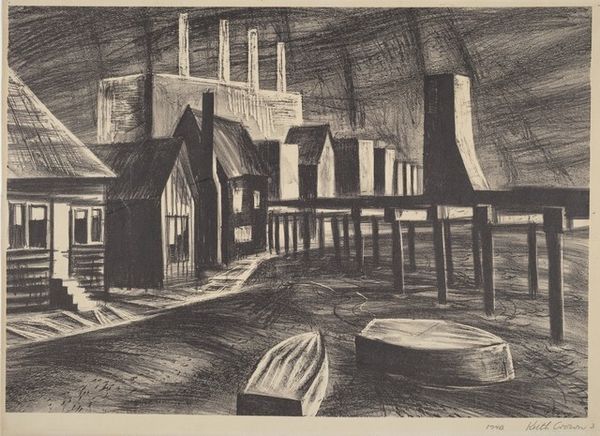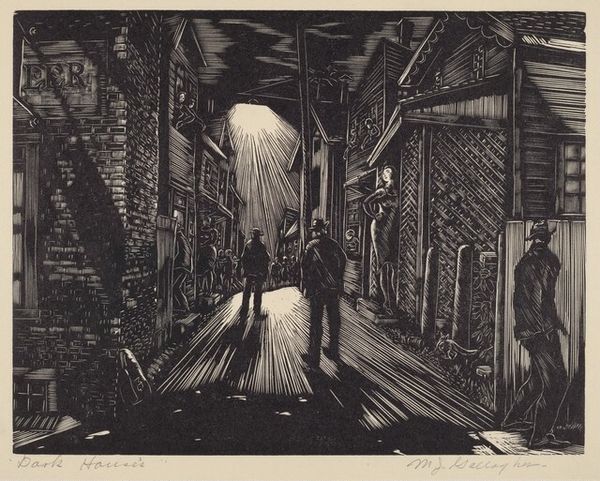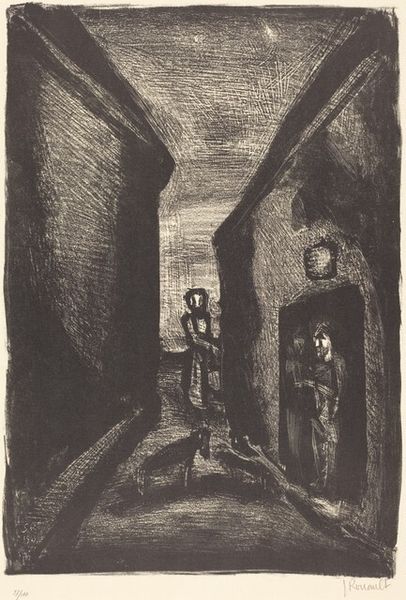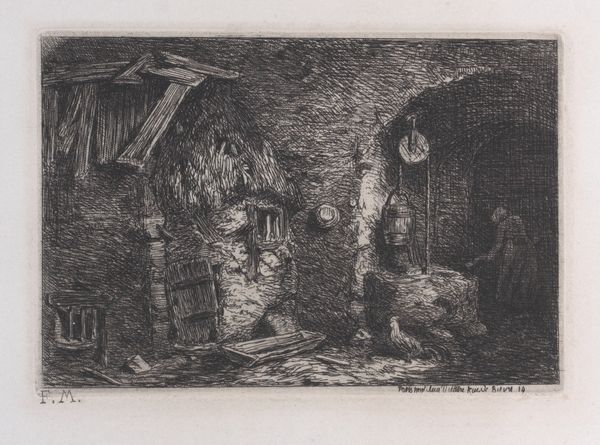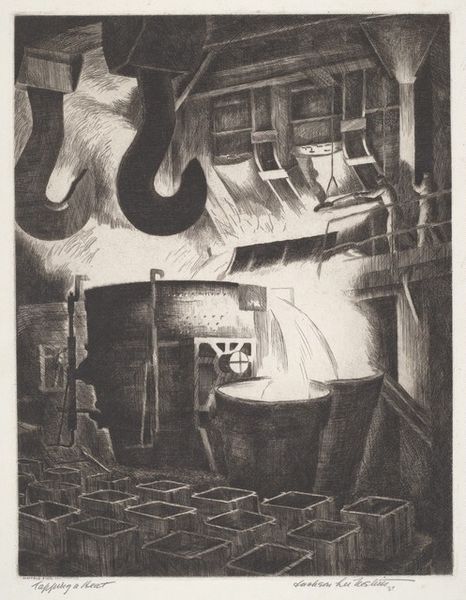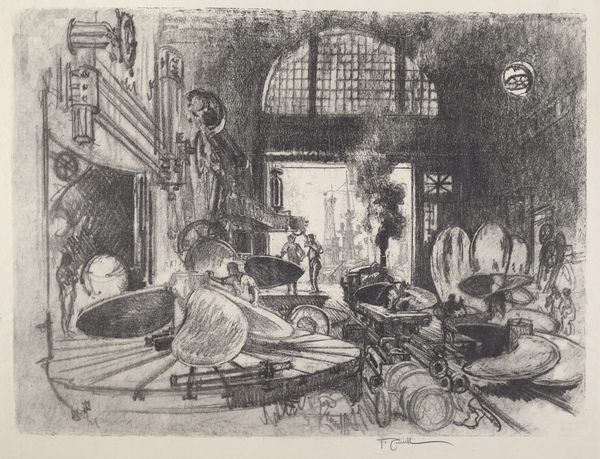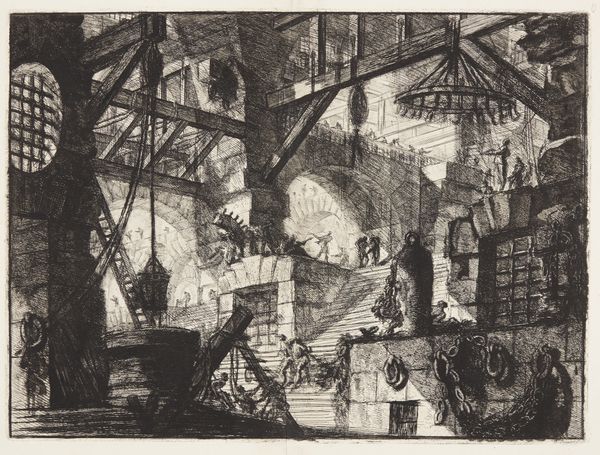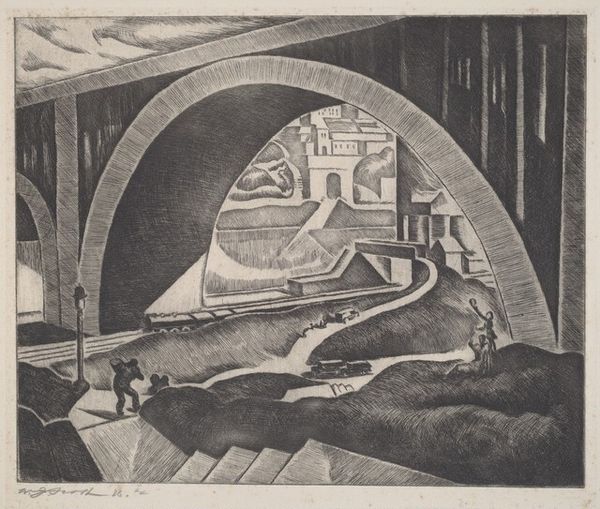
graphic-art, print, etching, woodcut
#
graphic-art
#
street-art
# print
#
etching
#
caricature
#
woodcut
#
surrealism
#
cityscape
#
realism
Dimensions: image: 204 x 254 mm sheet: 309 x 388 mm
Copyright: National Gallery of Art: CC0 1.0
Curator: Eli Jacobi's "East of the Bowery," created around 1939, captures a nocturnal cityscape using the graphic arts, specifically woodcut and etching techniques. What do you see? Editor: Darkness. Immediately, I feel enveloped by the density of shadows. It's more than just a scene; it's a mood. A sort of heavy, urban stillness hangs in the air, punctuated by that lone streetlight. Curator: It’s important to note that Jacobi created this work during the late Depression era. Images of urban life, particularly in areas like the Bowery, often highlighted the realities of poverty and social change. Editor: And you can sense that weight, can't you? It’s not romanticized in any way. Look at those figures huddled near the light. There’s a quiet desperation there. It's masterfully captured. The harsh lines almost amplify the feeling of unease. It feels a bit like Edward Hopper does graphic art. Curator: The choice of graphic art, particularly woodcut, served as a powerful medium during this time. It made art more accessible for broader dissemination. The bold contrast in Jacobi's prints really emphasized the stark realities he depicted. Notice the texture of the cobbled street, for instance. Editor: Yeah, it's all tactile. And look how he plays with light and shadow to create depth—that looming elevated train structure and those almost theatrically placed posters add layers. The darkness obscures as much as it reveals. There’s a story being told beyond the immediate scene. Almost like a film noir set, but quieter. Curator: I think what’s significant here is how Jacobi uses the visual language of realism but imbues it with social commentary. The location becomes almost a character in itself. Editor: Absolutely. This image has burrowed itself into my mind, evoking a sense of time and place so vividly. There is also something a little frightening here, in how he captured the density and the silence of a seemingly empty city. Curator: Agreed, I’m left with the distinct feeling of historical awareness and empathy. Editor: I am left wanting to linger, to see if the figures ever emerge into the light, or are lost there forever.
Comments
No comments
Be the first to comment and join the conversation on the ultimate creative platform.
